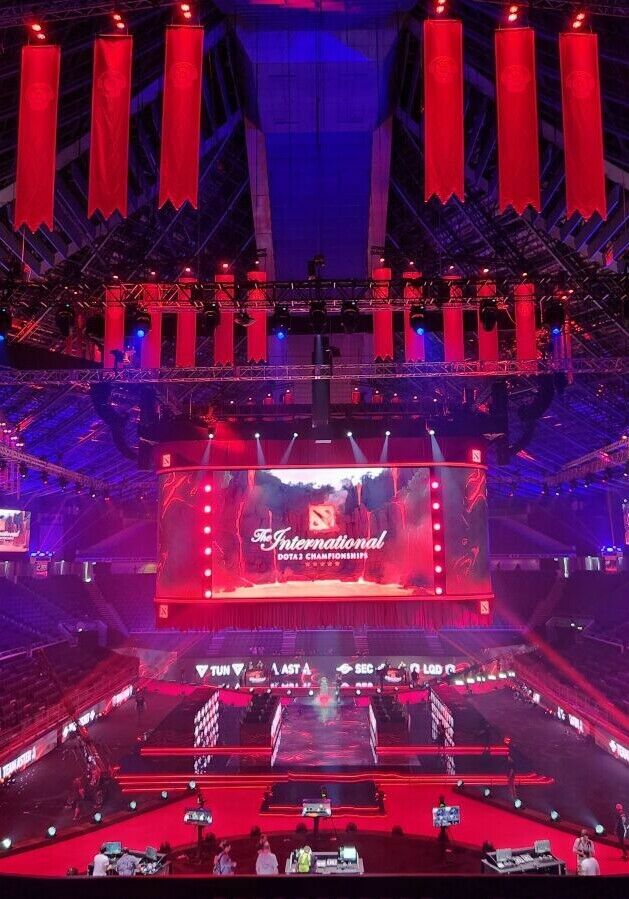d&b Soundscape thrilled audiences with a more visceral, immersive experience at the 2022 Defense of the Ancients 2 (DOTA 2) live world championship, held recently at the Singapore Indoor Stadium.
Currently in its 11th iteration and dubbed ‘The International’, the annual eSports world championship tournament was hosted by Valve, the game’s developer, and is considered one of eSports’ biggest events. Sound designer and owner of post production and live events agency Aural Fixation, Jason Waggoner has served as the live audio sound designer and department lead for the tournament since 2018, with d&b consistently being the audio manufacturer of choice.
The d&b system is primarily focused on game sounds, announcer commentary and video playback in the arena, as well as supporting live entertainment elements when called for. While d&b has been part of the event for several years, Soundscape was specified just last year. But due to COVID, the 2021 tournament was cancelled at the last minute, so 2022 was the first time the audience was able to experience its sound capabilities in person.
For Valve, the game audio in the arena needed to sound as close as possible to what it would be like if the audience were wearing headphones or watching at home.




